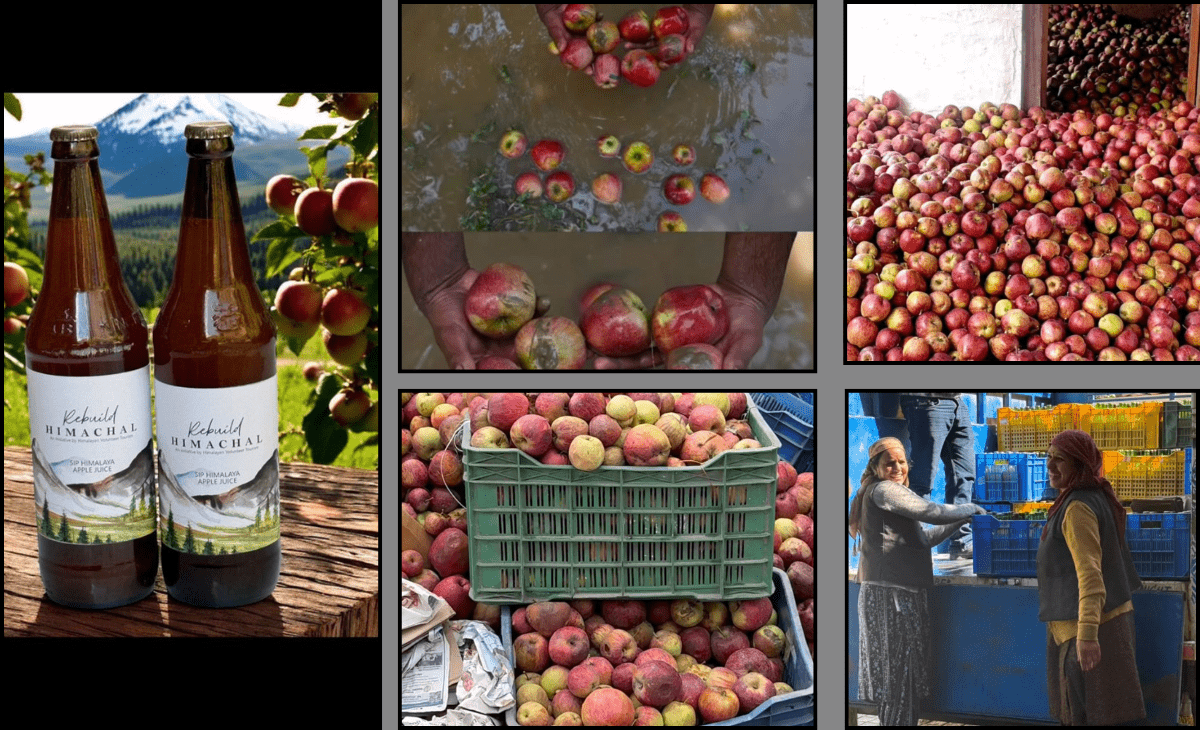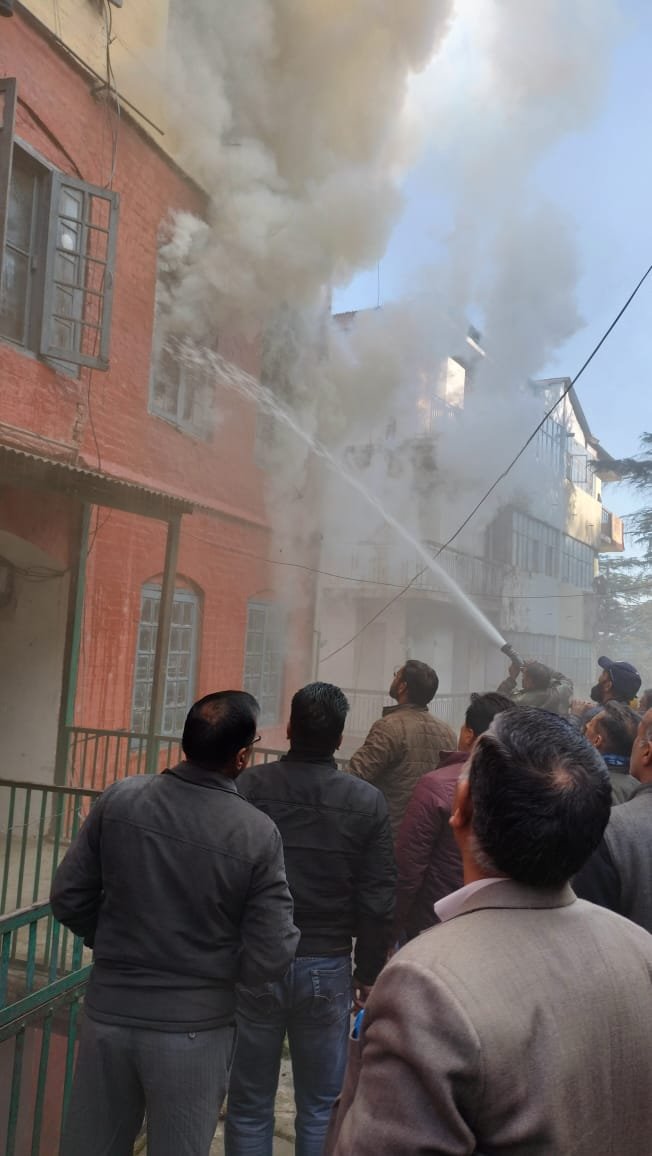Volunteers procured apples, turned them into juice and invested back in rural belts
Munish Sood
MANDI:
When devastating rains ravaged Himachal Pradesh recently, they didn’t just wash away roads and bridges but destroyed the livelihoods and dreams of people. The Kullu Valley, famous for its apple orchards, saw its economic lifeline crumble. The apple harvest lay scattered and rotting along broken roads.
It was during this dark hour that the “Rebuild Himachal” initiative was born, a project driven by compassion, resilience and community spirit, launched by the Himalayan Volunteer Tourism (HVT Foundation).
From rotten apples to hope in a bottle
Seeing the despair in farmers’ eyes, the HVT team led by founder Panki Sood and co-founder Mahima Mehra decided not to let the crisis define the valley. They began buying unsold apples directly from local farmers, offering them a fair price when the market had collapsed.
“We purchased apples at Rs 20 per kg from nearby villages,” said Panki Sood, speaking to The Newz Radar. “These were the same farmers who weren’t even getting Rs 2 per kg due to road blockades and the collapsed supply chain. We processed over 1,500 litres of natural, sugar-free, chemical-free apple juice from the procured fruit. It was sold in Delhi and Gurugram and I’m proud to say we’re now completely sold out.”
What might have been a heart-breaking loss instead became a symbol of resilience and innovation. The proceeds from the sales, Sood explained, are being reinvested into rebuilding flood-hit villages, a mission that HVT has placed at the heart of its operations.
“This isn’t about charity, but empowerment. Every bottle of juice is a story of a farmer’s fightback, a valley’s rebirth and a community’s spirit to stand tall again,” Sood emphasised.
Rebuilding communities, one step at a time
The proceeds from the juice initiative were directed toward rebuilding essential village infrastructure. The HVT’s first focus was restoring washrooms and community facilities, especially for women who had been struggling due to the loss of basic sanitation.
“In disasters, it’s always the basics that collapse first. You can live without comfort, but not without dignity. So, before anything else, we wanted to rebuild spaces that restore people’s sense of normalcy and self-respect,” said Panki Sood.
The HVT’s on-ground teams have since been working to rehabilitate flood-hit families, restore schools and restart skill-based training for local youth. The organisation’s approach remains deeply participatory, involving villagers at every step, ensuring solutions arise from within the community itself.
Movement powered by people
The journey from crisis to creation wasn’t easy. Setting up small-scale processing, coordinating volunteers and maintaining quality amid chaos demanded extraordinary effort. But with the help of local volunteers and incredible online supporters who ordered the juice from across India, the project gained momentum and turned into a movement of hope.
The HVT extended gratitude to everyone who supported the effort — from on-ground volunteers to design contributors.
“A special thanks to Jagjit Singh and Ravi ji, who voluntarily designed the ‘Rebuild Himachal’ logo,” said the foundation in a statement. “It beautifully captured the spirit of hope, community and renewal.”
Vivek Kedia, adviser to HVT Foundation, lauded the project’s impact and direction. “What HVT has achieved in such a short time is nothing less than remarkable,” he said. “They’ve shown how empathy, if channelled through organized action, can rebuild lives faster than any formal relief package. This is not just about helping people survive — it’s about helping them thrive again.”
Kedia also underlined that the model of upcycling waste produce into value-added goods can serve as a template for sustainable disaster recovery across hill states.
The foundation extended heartfelt thanks to everyone who stood with them — the volunteers, donors, farmers and buyers who believed in the mission. Each bottle of juice, they said, carried not just a product but a promise — that even in destruction, there can be creation and even in despair, there can be hope.
“When someone bought that juice, they weren’t just buying a drink,” said Mahima Mehra. “They were buying hope — bottled straight from the heart of Himachal.”
Behind the Rebuild Himachal initiative stands Himalayan Volunteer Tourism (HVT Foundation), a movement that began in 2018 as a humble Facebook group and has now evolved into a Section 8-registered not-for-profit organisation.
Founded by Panki Sood and Mahima Mehra, HVT was born out of a simple question — “Can travel and volunteering blend to create meaningful change?” From that seed, a community of over 30,000 members grew, linking travellers, volunteers and rural Himalayan communities.
“At our core, we believe in service and sustainability. We connect those who wish to give back through time, presence or knowledge to rural communities that nurture the spirit of the Himalayas. Even the simplest ideas, when rooted in community, can grow into movements that make a difference,” explains Mahima Mehra.
Over the years, HVT has launched multiple long-term initiatives in education, skill development, environment protection and volunteering, always rooted in the belief that the mountains deserve more than admiration.





